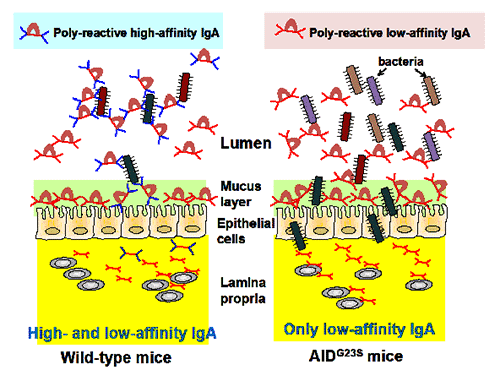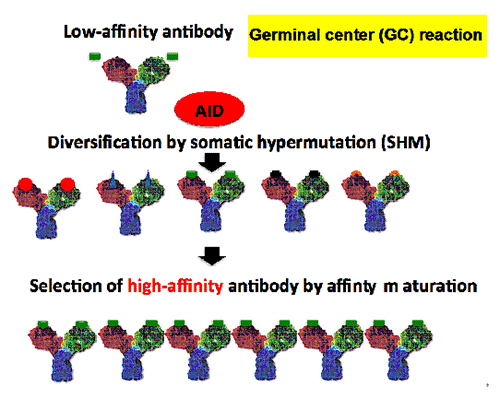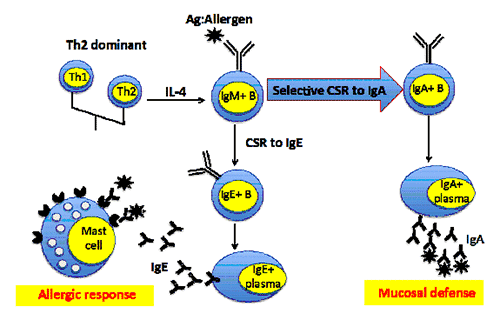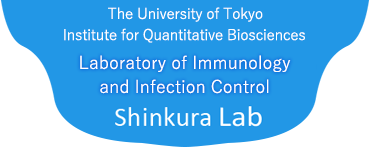Research Theme
1) Mechanisms of gut microbial regulation by intestinal IgA

↑Fig. 1
Two types of intestinal IgA: poly-reactive high-affinity IgA and poly-reactive low-affinity IgA. High-affinity IgA is important to control gut lumen microbiota and prevent their invasion.
We generate hybridomas from IgA producing cells in small intestine of wild type mice. We selected W27 monoclonal IgA as a best gut microbial modulator because of its strong ability to bind specifically against colitogenic bacteria. We are analyzing the bacterial target molecule for W27 to control microbial communities, and will elucidate the reason why IgA selects that target from a physiological point of view. We aim to develop a therapeutic W27 IgA antibody.
2) Molecular mechanism of SHM

↑Fig. 2
In germinal center (GC) reaction, AID introduces random point mutations in the variable region sequence of Ig genes to diversify its repertoire. As a result, only high-affinity Ig producing B cells are selected in GC.
We have found that an N-terminal mutant AID (G23S; glycine to serine mutation at the 23rd AA) showed defective SHM but relatively intact CSR both in vitro and in vivo, suggesting the N-terminus of AID may be the domain responsible for SHM-specific co-factor binding. By investigating the SHM-specific co-factor, we will elucidate the mechanism by which AID distinguishes SHM from CSR.
3) Search for IgA CSR inducer

↑Fig. 3
Selective CSR to IgA can prevent allergic response as well as enhance mucosal defense against a given antigen.
Upon antigen stimulation, B cells can undergo CSR to IgG, IgE or IgA isotypes. However, what induces B cells to each specific isotype is not completely understood. We focus on uncovering a novel IgA CSR inducer, which may drive IgA CSR instead of IgE CSR at the mucosal surface, helping prevent allergies, as well as enhancing mucosal immunity.


